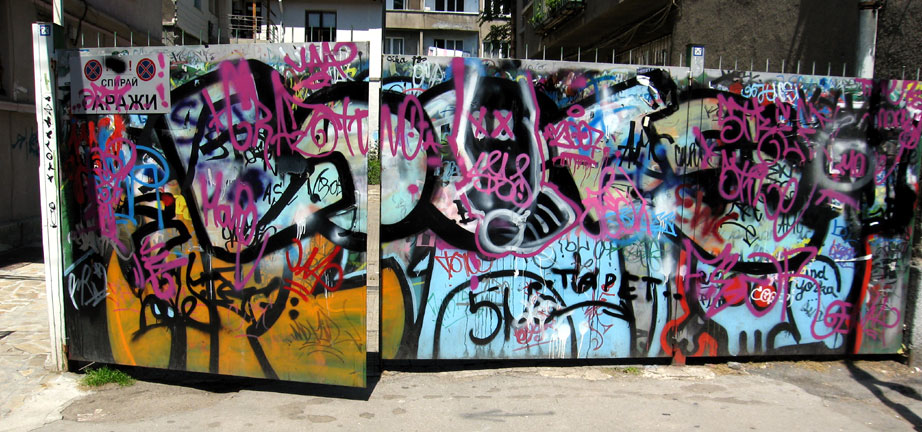 |
 |
 |
 |
After almost half an hour the downpour slows a little and we manage to flag a taxi coming down the Vitoscha Canal. The driver assesses the situation and, like a true professional, simply bumps up onto the flooded pavement. This means we need to take just two steps to reach the door he has thrown open. The storm takes a while to pass over and we have already been back in the hotel for a couple of hours when the sky lightens. The sun no longer shines, it is going down, glowing like the tip of a cigarette about to be stubbed out in a saucer of water.
I spend the next few hours surfing. There is so much web information and so many impressions that the mental picture of the ground I have to cover looks like one of the pieces of graffiti I found on the street leading off from the Tzar’s horse’s behind… |
|
As I read Todorova I can’t help reflecting on how her theory, as an analytical tool, is mirrored in Anderson’s Imagined Communities. Outside/inside perspectives. Anderson’s basic notion is that the nation is an imagined community. It is imagined because most members of the nation will never know more than a fraction of the other members but they nevertheless feel bound to them. The idea of a nation state really took off in the 19th century concomitant with the advance of the enlightenment and the destruction or limitation of a dynastic system that was divinely ordered. Thus the imagined nation attempts to generate a national state and, within it, constructs and enforces rules for belonging. It is therefore an imagined community within a defined, though not unchanging, territory. |

|
|
 |